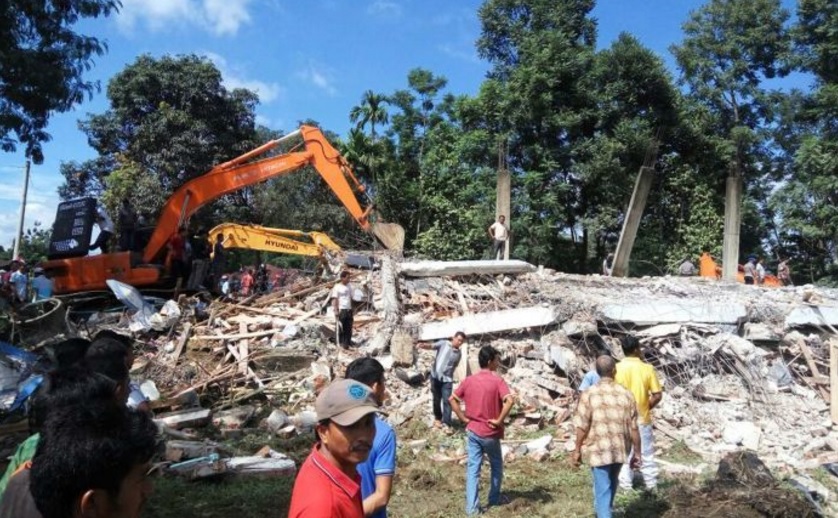There are reports of nearly 100 deaths following a magnitude 6.5 earthquake that struck near Aceh, in Indonesia, late Tuesday evening.
 The Australian Science Media Centre gathered expert reaction on the earthquake. Please feel free to use these comments in your reporting.
The Australian Science Media Centre gathered expert reaction on the earthquake. Please feel free to use these comments in your reporting.
Dr Behzad Fatahi, Associate Professor of Geotechnical and Earthquake Engineering and a Chartered Professional Engineer at the University of Technology Sydney (UTS), comments:
“A magnitude 6.5 earthquake at a very shallow depth of 8.2 km below the ground surface, and 19 km south east of Sigli in Aceh province, in Northern Sumatra in Indonesia, occurred on December 6, 2016 at 22:03:32 UTC. The epicentre of earthquake was approximately 1.5km offshore in strait of Malacca in Aceh province.
“This earthquake is the result of the collision of the Australian and Eurasian tectonic plates. The Australian plate slides under the Sunda plate (part of Eurasian plate) at a rate of approximately 53 mm/year in the location of this recent earthquake, creating a subduction zone with very active volcanoes and strong earthquakes.
“A similar earthquake with the magnitude of 6.1 occurred in the same area on 2 July 2013 damaging more than 4,000 houses and claiming more than 30 lives.
“The Great Sumatra Fault is several hundred km to the east of where the Sunda and Australian Tectonic plates collide (strike-slip faulting). It is very likely that this gigantic fault was the source of this recent earthquake, because there have not been any major activities along this fault particularly close to Banda Aceh since the 2004 Indian Ocean earthquake (with magnitude of 9.1) which devastated the entire region and killed more than 250,000 people in 14 countries.
“Sumatra is certainly one of the most complex active tectonic zones on earth. The key reason that this area is very seismically active lies in the fact that parts of the Australian tectonic plate are rotating anticlockwise and, at the same time, they are pushed below the Eurasian plate in the north of Sumatra in Indonesia, causing megathrust earthquakes. These megathrust earthquakes have been the source of the largest earthquakes in the world in the last century.
“The Sunda trench, which is where the Australian and Eurasian tectonic plates meet in Sumatra, is one of the world’s major tectonic plate boundaries. Indonesia has about 400 volcanoes, of which nearly 100 are active. Megathrust earthquakes can trigger eruption of active volcanoes.
“Rural areas in Aceh province in Sumatra have a long tradition of building timber pile dwellings that are elevated above the ground surface and covered by concrete or stone slabs. The roofs are generally made of corrugated metal or timber covered by palm leaves. These buildings generally do not have lateral load bearing systems and perform poorly under earthquakes or strong winds.
“Many houses build in the last twenty years in Aceh province are reinforced concrete frames with brick infill, while generally, the quality of construction is not good. It is expected that many buildings without reinforced masonry walls would be damaged significantly since enough lateral support may not have been provided during design and construction.
“Assessment of some of the initial information shows that single story houses without reinforced internal brick or masonry walls have been damaged severely or collapsed. In addition, there have been cases where structures with small concrete columns without lateral beams, but heavy roofs, have collapsed.”